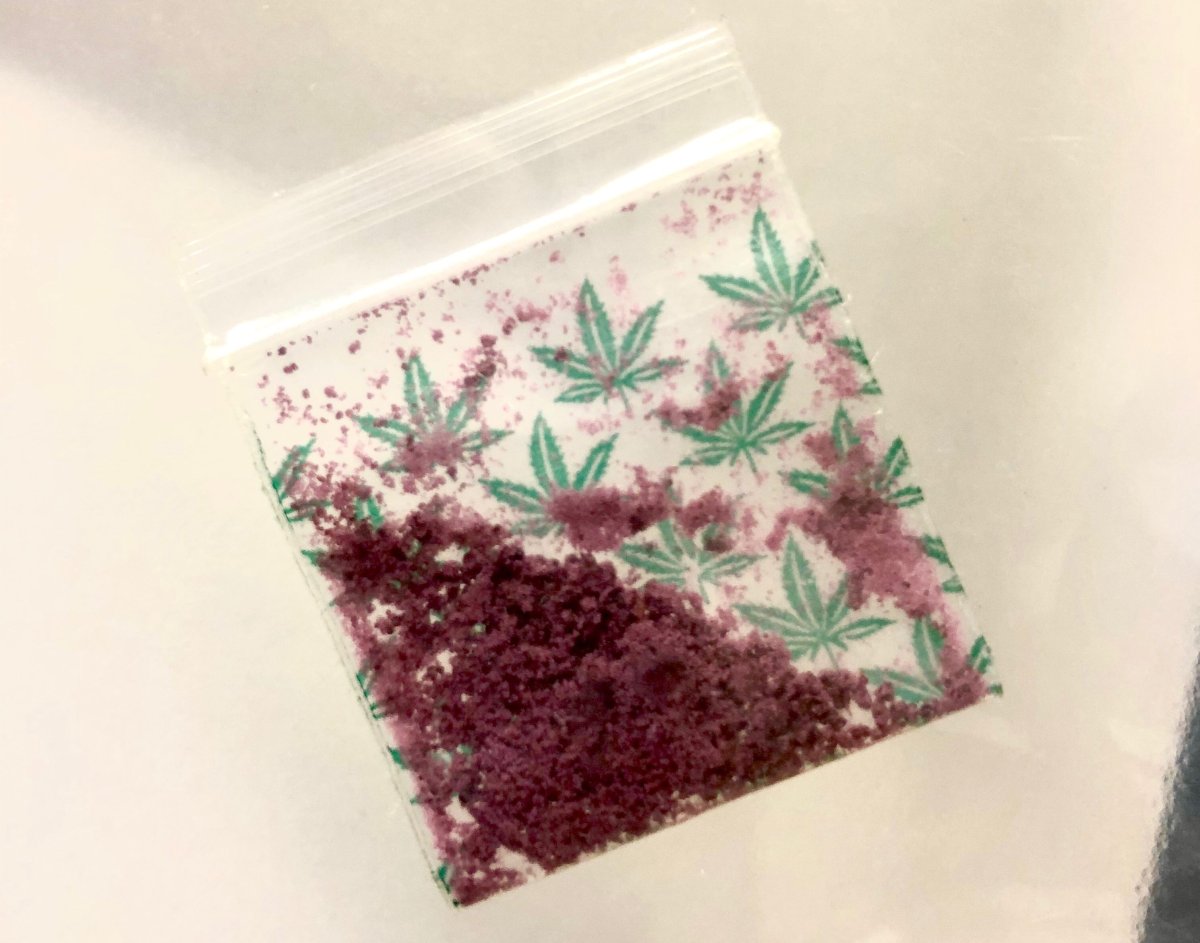A southwestern Ontario health unit has issued a warning following the recent circulation of toxic purple fentanyl in Oxford County.

The warning from the Southwestern Public Health Unit (SWPH) follows two recent deaths believed to be linked to the purple-coloured fentanyl.
Lisa Gillespie, a SWPH public health nurse, told Global News the deaths reportedly occurred over this past weekend.
“We also heard from other clients coming in over the past month about some non-fatal overdoses believed to be linked to the substance, so it was very concerning to us,” she said.
According to the opioid advisory issued by the health unit, “fentanyl of any colour has the potential to be toxic.”
“We’ve heard various different colours,” Gillespie said. “Whether it’s yellow, orange, pink, there doesn’t really seem to be a rhyme or reason as far as we know to what that means.”
She also stressed that there is “no safe amount of fentanyl.”
“It’s a very dangerous and potent opioid and that’s because there is no standard supply,” she said. “It could be a really potent dose and the next time it might be a bit lighter, and people just don’t know what they’re getting.”
- Small grocers, co-ops receiving boost from Loblaw boycott: ‘A lot of anger’
- B.C. man losing vision needs to find home for treasured book collection
- U.K. bans generic passwords over cybersecurity concerns. Should Canada be next?
- More foreign interference action coming after inquiry report, India arrests: LeBlanc
While no confirmation has been provided as to how long the specific strain of the recent toxic purple opioid has been circulating in Oxford County, Gillespie said there can be a number of different colours of fentanyl circulating at any given time.
“It just seems that the current purple fentanyl that is circulating is particularly toxic,” she said. “That’s why we wanted to issue an advisory to remind people of the unsafe street-level drugs and some things that people can do to reduce the risk of an overdose.”
Gillespie also told Global News the number of reported overdoses made to the health unit has seemingly increased annually.
“We know in 2021, our rates of overdoses surpassed the Ontario rates, and it seemed for the early data for 2022, that trend is continuing, although those numbers aren’t confirmed yet,” she said. “(This year) isn’t looking great either, so we are keeping a very close eye on those numbers and again, talking to our clients and our partners whenever we can about the risk.”
SWPH is also advising addiction support organizations to be aware that demand for services may increase in the near future.

Additionally, the health unit is also stressing the importance of recognizing the symptoms of an opioid-related overdose.
“This is respiratory arrest,” Gillespie said. “Breathing will slow and eventually stop, lips will turn blue, fingernails turn blue, the person won’t be easy to arouse, with pinpoint pupils and limp bodies. In that case, we want people to immediately call 911 and bring experts to the scene.”
She also recommends administering a naloxone kit in the event of an overdose.
Those using the drug are also advised to take steps to minimize the chances of an overdose, including not mixing substances, starting with small amounts, carrying a naloxone kit and not using drugs alone.
“We just want people to know that overdose can be prevented,” Gillespie added. “So, learn how to recognize the signs of an opioid overdose, get a naloxone kit, learn how to use it, and talk to your loved ones if you’re concerned about their use. There are many local resources here to help.”
More information can be found on the Southwestern Public Health Unit’s website.









Comments